UPDATE (05 November 2018): Please note that we have posted a second production run update to this initial review. In short, C. Crane addressed all of the major issues I noted in the review below. Click here to read the CCRadio-EP Pro update.
Without a doubt, C. Crane Company has become an established name in our radio community as a retailer and manufacturer that focuses on the world of broadcast listening. The company’s ads, website, and blog all promote broadcast listening as a viable and important part of our evolving media landscape. Their radio products are all designed with broadcast listening in mind.
Currently the company manufactures one of the most capable AM broadcast receivers on the market: the CCRadio-2E.
The CCRadio-2E, however, is a pricey portable at $170 US, perhaps overkill for the casual broadcast listener.
So, for those seeking a simpler broadcast receiver, C. Crane later developed the original CCRadio-EP, a bare-bones, fully analog AM/FM radio with a large backlit slide rule dial, designed for the listener who wants to “go old school” in their receiving.
The original CCRadio-EP also attracted mediumwave/AM broadcast radio listeners because it had fairly impressive performance characteristics supported by C. Crane’s patented Twin Coil Ferrite AM antenna. In many ways, the original CCRadio-EP was somewhat reminiscent of the GE Superadio.
Yet while the original CCRadio-EP has––according to C. Crane––been a popular product, because certain vital EP components are now becoming obsolete, the company has been forced to redesign it; hence the new CCRadio-EP Pro.
The CCRadio-EP Pro: A different animal
Let’s be clear, though: unlike its predecessor, the CCRadio-EP Pro is no longer a true analog set.
![]() Despite external similarities, internally this radio and its predecessor are very different receivers. Inside, the EP Pro is based on the Silicon Labs SI4734 DSP chip. Perhaps it goes without saying, but I consider the move to a chip a significant design change.
Despite external similarities, internally this radio and its predecessor are very different receivers. Inside, the EP Pro is based on the Silicon Labs SI4734 DSP chip. Perhaps it goes without saying, but I consider the move to a chip a significant design change.
In other words, much like the Degen DE321, the Degen DE32, the Tecsun R-2010D, the Kchibo KK9803 and the ShouYu SY-X5 (which I review in a shoot-out here), the CC-Radio EP Pro is a mechanically-tuned DSP receiver.
Crane kindly sent me a review sample of the new CCRadio-EP Pro. It’s important to note that the review unit came from a strictly limited first production run; the actual consumer rig’s first major production run is still a few weeks away. Thus this radio is not yet shipping.
I’ve had the CCRadio-EP Pro for a few weeks now, during which time I’ve given it a thorough evaluation. So, let’s take a close look at the CCRadio-EP Pro––first, in terms of performance.
AM Performance
Let’s face it: if you’re a radio enthusiast and reading this review, you’re likely mainly concerned with the EP Pro’s performance on the AM broadcast band. Personally speaking, that’s true for me, too.
Over the years of reviewing portable receivers of all stripes, I’ve learned that nothing beats a radio specifically designed for AM broadcast band performance. Without a doubt, C. Crane intends that the CCRadio-EP Pro be one of these radios. Indeed, in many ways, it’s an ideal set for broadcast listening, because it sports:
- C. Crane’s Twin Coil Ferrite AM antenna
- A large speaker
- Wide/Narrow bandwidth switch
- Dedicated external antenna connections
Although beefy internal AM antennas, large speakers, and external antenna connections were relatively common in the 1970s and 80s, these are rare features among modern AM/FM portable radios. The fact is, radios with superb AM broadcast performance are becoming a rather rare breed.
In other words, the CCRadio-EP Pro has many design features that position it to be a formidable AM broadcast band receiver.
So, then, how does it perform? Well…that’s complicated to explain. The CCRadio-EP Pro has some positives, but also a notable amount of negatives.
Let’s start with the good news.
Positive: AM Sensitivity
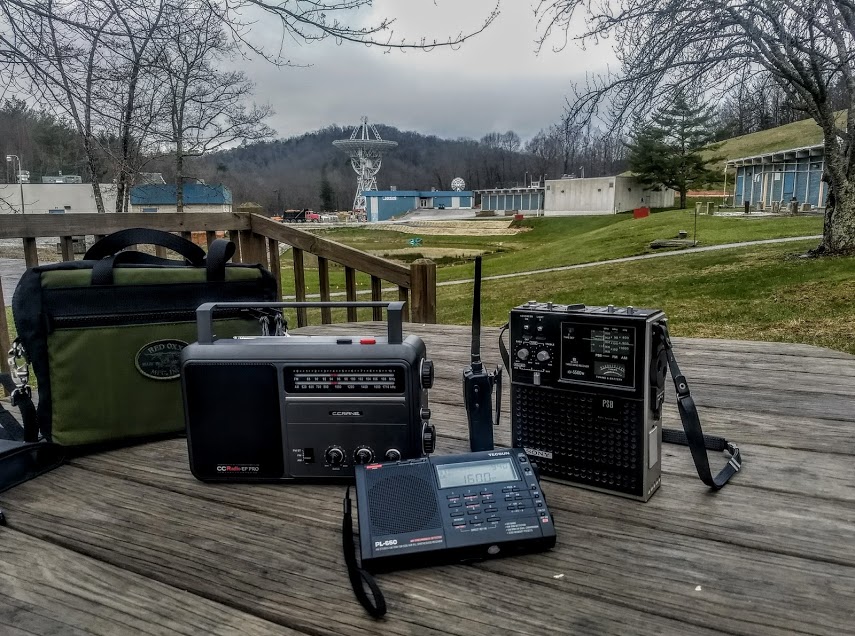
Comparing the CCRadio-EP Pro (left) with the Sony ICF-5500W (right) and the Tecsun PL-660 (middle) at the Pisgah Astronomical Research Institute.
The CCRadio-EP Pro is quite sensitive on the AM broadcast band. When I’ve compared it with a number of shortwave portables I own, it almost always outperforms them on frequency. When my Tecsun PL-660––one of the most sensitive mediumwave receivers among my shortwave portables––is tuned to a marginal signal, it sounds about half as sensitive as the CCRadio-EP Pro.
Check out the following comparison videos:
Click here to view on YouTube.
Click here to view on YouTube.
Click here to view on YouTube.
Click here to view on YouTube.
The noise floor is fairly low while the audio is robust and room-filling via the EP Pro’s front-facing speaker.
Positive: No drifting
As I’ve said above, unlike the original (analog) CCRadio-EP, the EP Pro is a mechanically-tuned DSP radio. In all of my testing, I never noted a time that the radio drifted off frequency.
Positive: Nulling
Crane’s internal Twin Coil Ferrite AM antenna affords the listener excellent gain and nulling capabilities. In fact, I find the nulling quite sharp, a major positive for this listener.
Positive: Fine tuning control
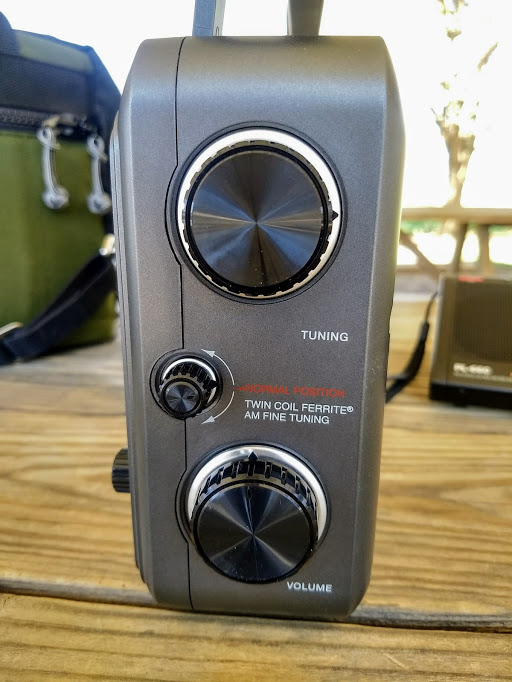
On the right side of the CCRadio-EP Pro you’ll find a large tuning knob (top), the antenna trimmer (middle), and large volume knob (bottom)
Like the original EP, the EP Pro has a Twin Coil Antenna Fine Tuning adjustment.
This feature can help make small adjustments to received station to peak reception. This fine tune control is actually trimming the twin coil ferrite bar.
Positive: Wide/Narrow filter
The EP Pro does have a Wide/Narrow filter selection which essentially helps widen or narrow received audio. Note that this has no meaningful impact on the imaging mentioned below.
Altogether, this about sums up the CCR-EP’s positive performance capabilities on the AM broadcast band.
Now let’s look at the CCR-EP’s negatives, some of which are, unfortunately, significant.
Negative: Muting between frequencies
Please note: C. Crane addressed this issue in the second production run of the CCRadio-EP Pro. Please click here to read the second production run review.
The original CCRadio-EP revives the joy of a purely analog radio set. When you tune up/down the bands, there’s a fluidity to the whole process. While the interface is simple, analog tuning allows your ears to pick up on the nuances––the rise and fall of stations both strong and weak as you travel across the dial.
As we mentioned earlier, mechanically-tuned DSP radios, like the new CCRadio-EP Pro, may look like analog sets, but inside, they’re entirely digital. And one drawback to all of the mechanically-tuned DSP radios I’ve tested so far is a tendency to mute between frequencies. With each 10 kHz frequency step, you’ll hear a short audio mute. If you tune across the dial quickly, audio mutes until you land on a frequency. Here’s a video demonstrating the effect:
Click here to view on YouTube.
Needless to say, muting makes band scanning a more fatiguing process. It’s really a shame this affects the AM band. I hope that C. Crane engineers can minimize this issue in future production runs, but I understand much of this is a characteristic/limitation of this particular DSP chip.
Negative: Images
Please note: C. Crane addressed this issue in the second production run of the CCRadio-EP Pro. Please click here to read the second production run review.
Crane actually includes a note about weak images which you might find below and/or above your target signal. Weak images are an unfortunate reality of the CCRadio-EP Pro; they’re prevalent on both AM and FM.
Here’s how you’ll experience the images by way of example: let’s say you’re tuning to a strong local AM station on 630 kHz, noting that the EP Pro has 10 kHz tuning increments. As you tune to 630 kHz, you’ll hear the station on 620 kHz, though it won’t be as strong as it is on 630 kHz. Then if you tune to 640 kHz, you’ll likely hear a weaker image of the station there, as well. In my experience, images are present on both sides of the target station if the station is strong. If it’s a weak station, you might only hear it, say, 10 kHz lower but not above (or vise versa).
As you might imagine, this poses a problem for the weak signal AM broadcast band DXer. Let’s say you’re trying to snag an elusive DX station on 640 kHz; although the EP Pro might have the sensitivity required to grab that station, it’s simply not selective enough (if selective is indeed the right word) to reject the local station on 630 kHz, thus your weak DX will have local competition.
This, more than any other negative, takes the EP Pro out of the realm of the mediumwave DXer.
Negative: Inaccurate dial
Please note: C. Crane addressed this issue in the second production run of the CCRadio-EP Pro. Please click here to read the second production run review.
I’ve also discovered that, on my unit, the top half of the AM dial is inaccurate. I estimate that the slide rule dial is off by about 40-50 kHz at the top end of the band. It’s much more accurate below 1,200 kHz, however.
Here is a few photo of the CCRadio-EP Pro tuned to 1600 kHz:
I hope C. Crane can address this in future iterations of the EP Pro. While I don’t expect slide rule dials to be extremely accurate, there nonetheless needs to be some reliability.
Note: C. Crane engineering is aware of this problem and even attempting to implement a fix on the first production run units. I will follow up when I learn more.
Negative Audio “pop” with power on
As you might have heard in the band scanning video above, any time you turn on the CCRadio-EP Pro, you’ll hear an audio “pop.” This is happening when power is applied to the audio amplifier. The pop is not soft, but fairly audible, and is present even if you turn the volume down all the way. The audio pop is prevalent via both the internal speaker and when using headphones. Fortunately, it’s much less pronounced via headphones. While not a major negative, I find it a bit annoying, and don’t doubt that other listeners will, too.
Note: C. Crane engineering tell me that they’ve minimized the audio pop since making the limited first production run, thus the first full production run should be improved.
Negative: AM frequency steps currently limited to 10 kHz
Please note: C. Crane addressed this issue in the second production run of the CCRadio-EP Pro. Please click here to read the second production run review.
My initial production run EP Pro is limited to 10 kHz frequency steps. This radio is primarily marketed to North America where 10 kHz increments are standard. Of course, if you’re trying to use the EP Pro to snag Transatlantic or Transpacific DX, you’ll miss the ability to tune between those broad 10 kHz steps. But, again, due to the imaging mention above, I think the CCRadio-EP Pro is simply not suited for DXing.
Note: C. Crane engineering has informed me that future production runs of the CCRadio-EP Pro may have a 10/9 kHz switch, thus eliminating this negative. If you’re reading this review a few months after time of posting––crossed fingers––this may already be resolved.
FM Performance
If you’re looking for a simple AM/FM radio, and plan to spend most of your time on the FM band, you’ll like the CCRadio-EP Pro.
Positive: Audio
FM audio is very good on the CCRadio-EP Pro. I think it would be safe to say that it’s superior to most other receivers currently on the market in its $85 price range. Audio is room-filling and has good characteristics with dedicated adjustments for Bass and Treble. FM audio is reminiscent of 1970s-era solid-state receivers like the GE Superadio (a big positive, in my book). The bass is not very deep and resonant, nor the treble super-crisp, but the sound overall is very pleasant to the ear.
Positive: Sensitivity
The EP Pro is a sensitive FM receiver. It received all of my benchmark local and distant FM stations.
Positive: No drifting
As with AM, the EP Pro does not drift off frequency (again, this is actually a DSP radio).
The FM band is less affected by some of the negatives that impact AM broadcast band listening:
Negative: Inaccurate dial
As with the AM dial, FM frequency markings are slightly off. I measured the entire FM band and found that the upper half of the dial (above 102 MHz) seemed to deviate the most. See images below comparing the Tecsun PL-660 and CCRadio-EP Pro tuned to the same FM frequencies:
Here are a few examples of the CCRadio-EP Pro and Tecsun PL-660 tuned to the same frequencies:
Note: As mentioned above, C. Crane is trying to implement a fix for this in future production runs.
Negative: Imaging
As with the AM band, you will find imaging on the FM band. This bothers me less on the FM band, but I live in an area where the FM dial isn’t incredibly crowded. If you live in an urban market with stations packed into the dial, then the imaging concern will probably make the experience of listening to a weak station adjacent to a strong station quite unpleasant.
What about muting between frequencies? While you can hear frequency steps on the FM band, there is little to no muting between frequencies. It almost feels more like an analog radio.
Click here to view on YouTube.
Funny, but the weak signal images around a strong FM frequency actually help contribute to an analog-like experience during band scanning, as stations seem to rise and fall as you tune.
There is another factor that I don’t really consider a positive, but is worth noting. The EP Pro is one of the best mechanically-tuned DSP receivers to use on the FM band because the slide rule dial is wide––there’s a larger space for the needle to travel. FM band scanning would be a pretty pleasant experience if only the dial markings were more accurate.
Summary
Every radio has its pros and cons. When I begin a review of a radio, I take notes from the very beginning so that I don’t forget some of my initial impressions. Here is the list I formed over the time I’ve spent evaluating the C. Crane CCRadio-EP Pro.
Pros:
- Excellent AM sensitivity
- Good audio via internal speaker
- Internal Twin Coil Ferrite AM antenna provides excellent gain and nulling
- Excellent dial backlighting
- External AM/FM antenna connections
- Quiet (included) power supply
- Low noise floor
- Dial backlighting
Cons:
- Imagining on both AM and FM (fixed in 2nd production run)
- Muting between frequencies on AM (fixed in 2nd production run)
- Pop in audio when unit is turned on, regardless of default volume level
- Dial markings inaccurate (fixed in 2nd production run)
- AM frequency steps currently fixed too broadly at 10 kHz (fixed in 2nd production run)
Conclusion
My conclusion is that the first production run of the CCradio-EP Pro is simply not an enthusiasts’ radio.
If you read the list of negatives in the AM performance section of this review, you’ll know why I simply can’t recommend it…at least not yet. If C. Crane could minimize AM muting, improve imaging and fix the frequency accuracy, this radio may prove more promising. But at this point, the limited production run CCRadio-EP Pro lacks the level of refinement that I’ve come to expect from a C. Crane radio.
For what it’s worth, I have been in close contact with C. Crane regarding these issues; the company is taking them to heart and even looking to implement some fixes/adjustments prior to their full production run. As these issues are resolved, I’ll amend this review. Click here to read the second production run review.
The lack of refinements is somewhat disheartening. Otherwise, the CCR-EP Pro would be a great mediumwave DXing machine. When on frequency, it’s quite sensitive and stable! Perhaps some mediumwave DXers could overlook the negatives above to take advantage of this. I would not, however. I’d soon find the problems frustrating and turn to other receivers in my arsenal. Sensitivity is important, but personally I would sacrifice sensitivity to have an overall better tuning and listening experience.
On the other hand––as C.Crane makes a point of stating––the CC-Radio EP Pro was designed around the needs of Bob Crane’s mother: so is essentially an effective radio for casual listening that’s utterly simple to use. In this respect, at least, the EP Pro is a success.
The EP Pro has no multi-function buttons, no menus, and no memories. The knobs and buttons are tactile and obvious. The backlit dial is also a nice touch; I love it. The EP Pro is old school design around a modern DSP chip and, in terms of audio, a hat tip to classic solid state analog radios from the 1970s and 80s.
The casual listener––especially those who use radio to primarily listen to their one favorite station––will enjoy the EP Pro. For example, I have an older friend who’s in the process of replacing his bedside radio of 30+ years. He wants a set he can tune to his staple AM broadcast station (which is not a super-easy catch) and leave it on frequency––essentially, he wants a “set it and forget it” radio. I think the EP Pro will work well for this application.
But for radio enthusiasts––like most of you wonderful people who read the SWLing Post––I would pass on the EP Pro and consider a more capable mediumwave radio instead like the original CCRadio-EP, the CC-Radio 2E, or a vintage solid state set like the GE Superadio, Sony-5500W, or the venerable Panasonic RF-2200.
You can purchase the CCRadio-EP Pro from the following retailers:
- C. Crane $99.99 (plus shipping)
- Universal Radio $84.95 (plus shipping)
- Amazon.com $89.99 shipped (affiliate link)

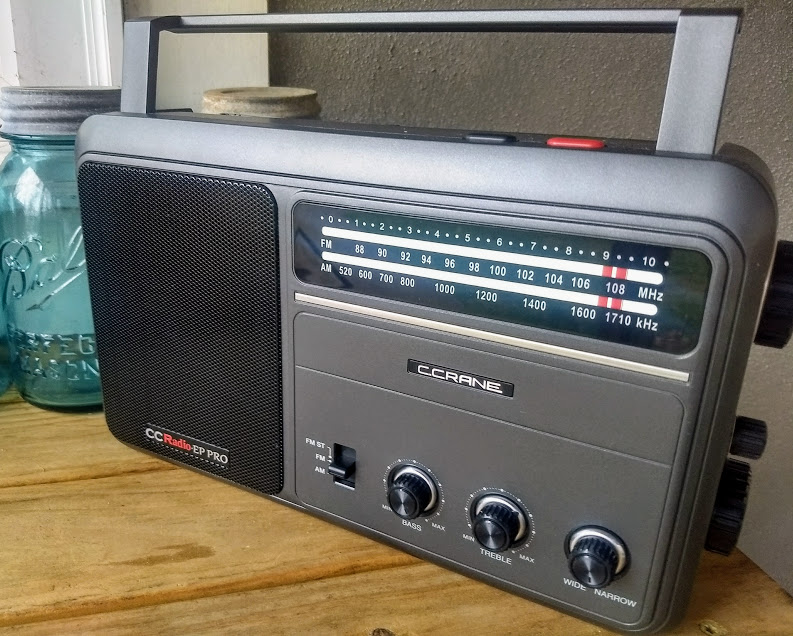
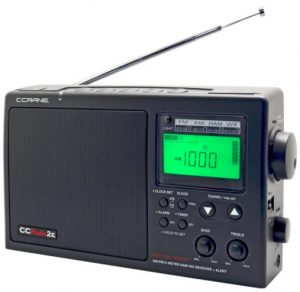
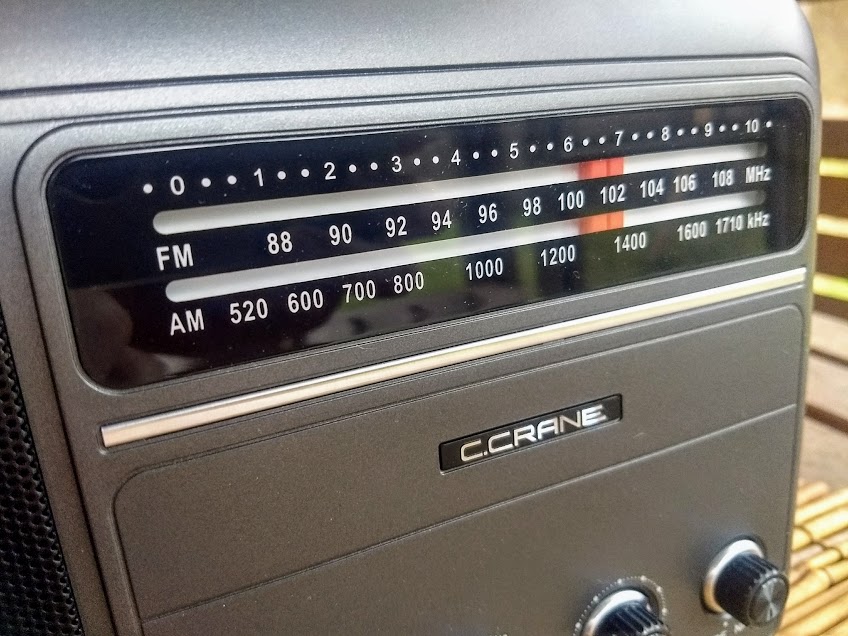
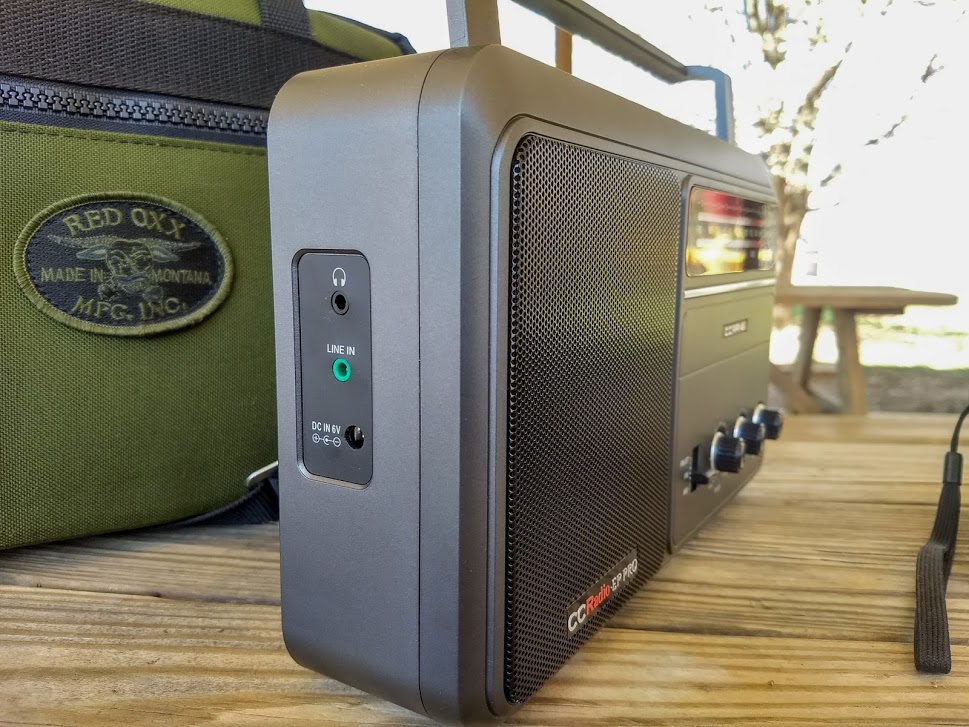

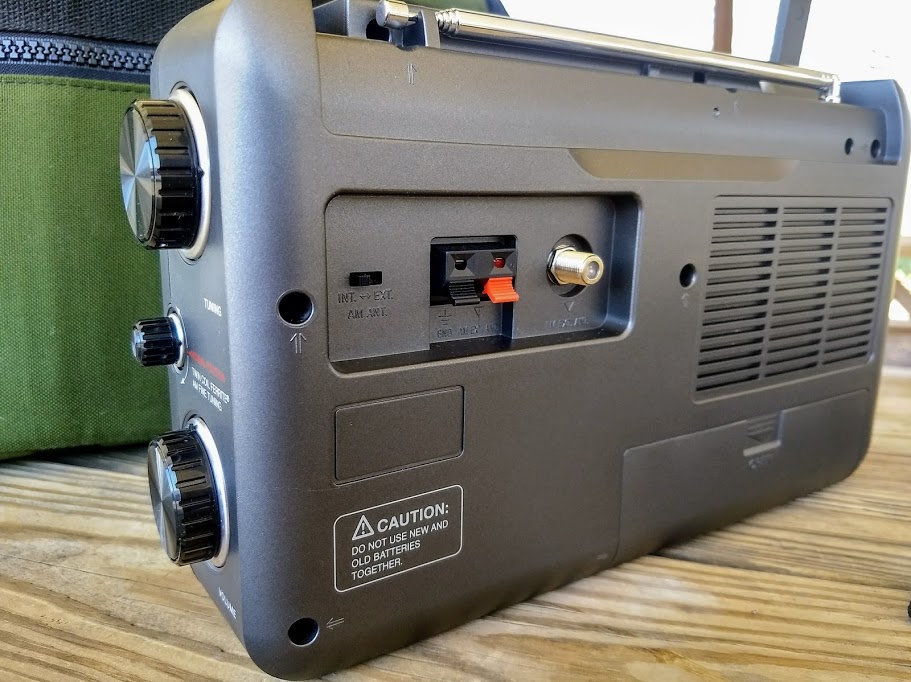
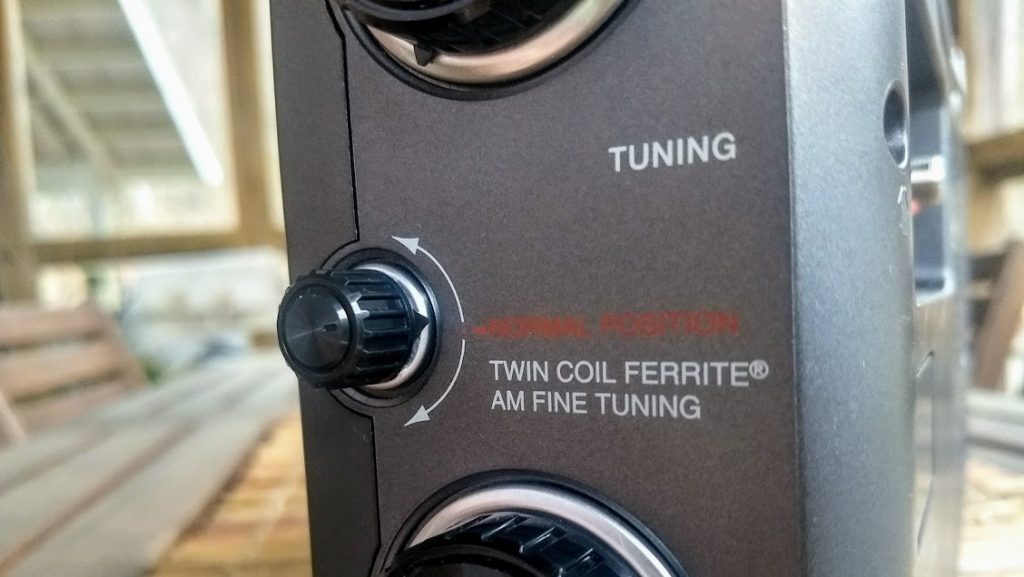
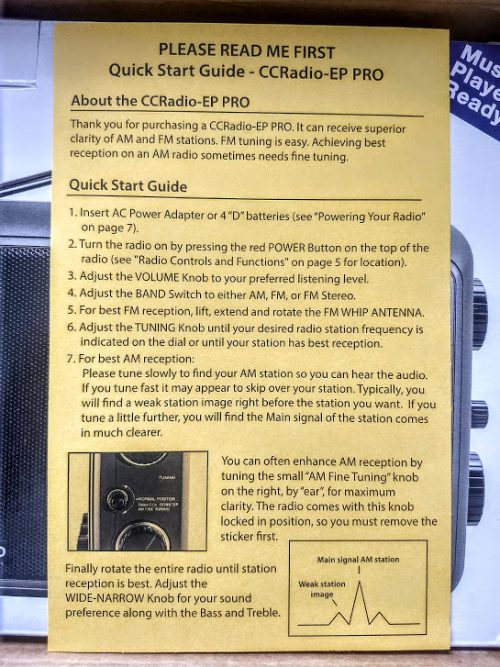
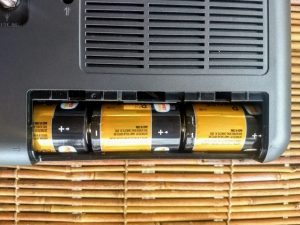
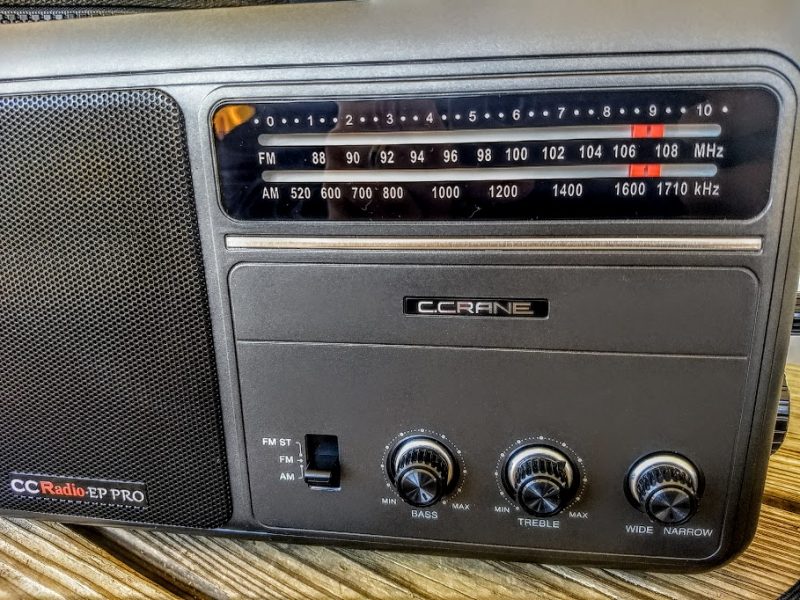
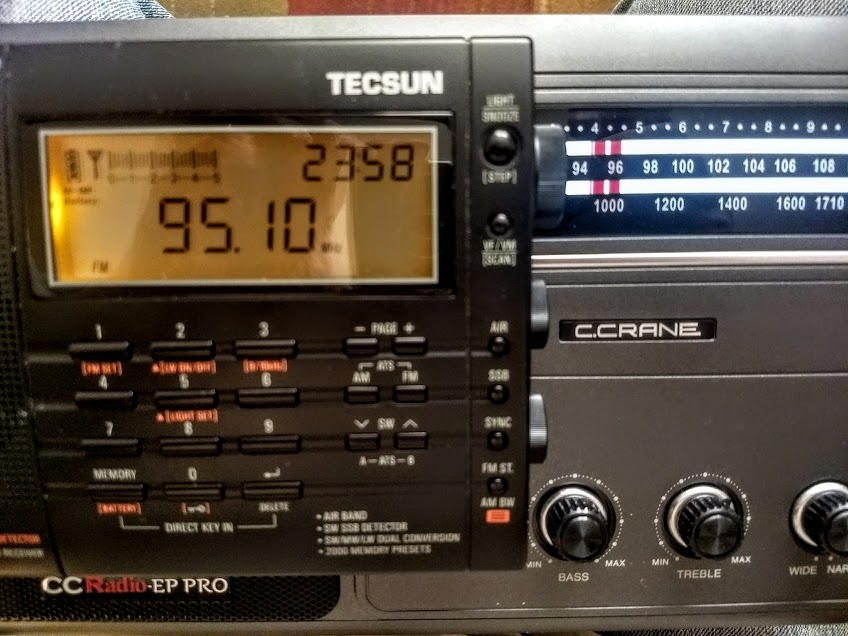
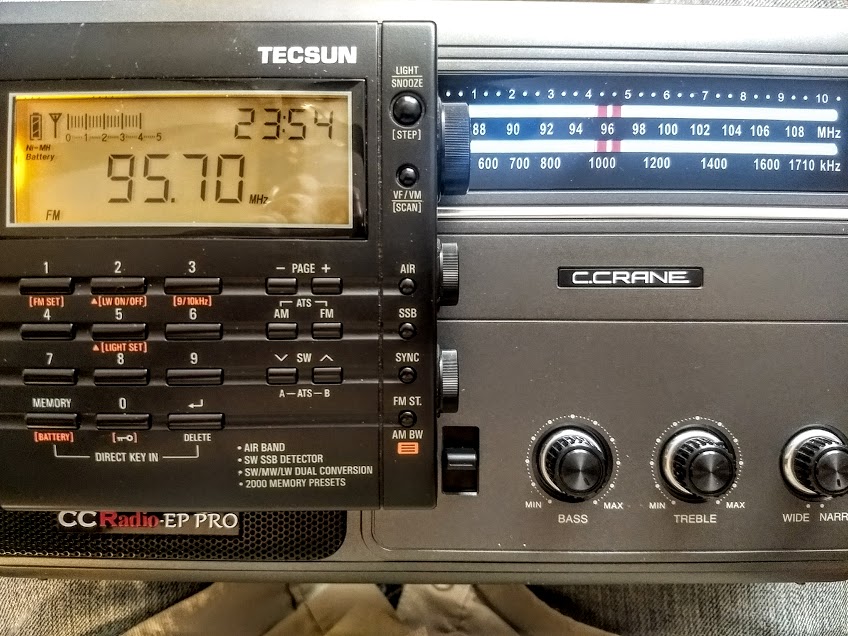
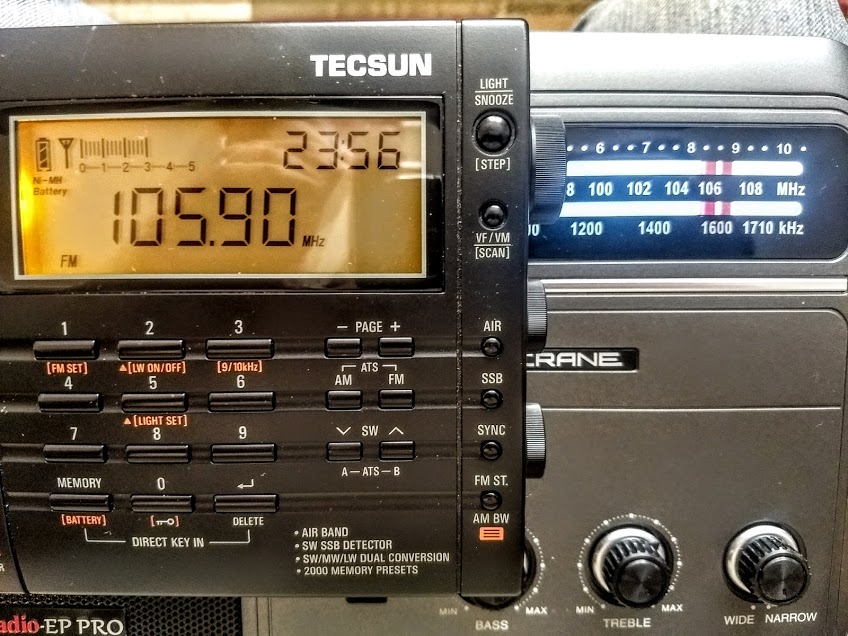
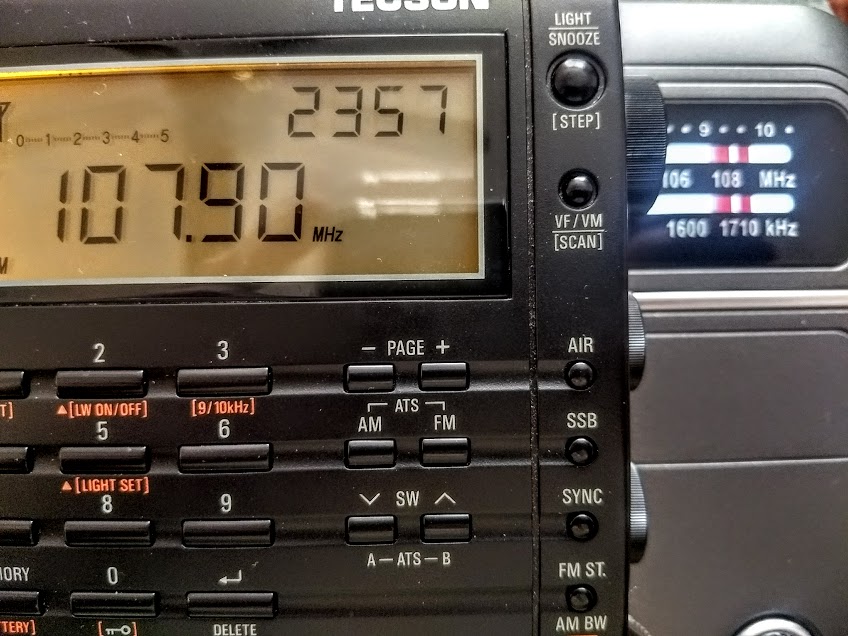
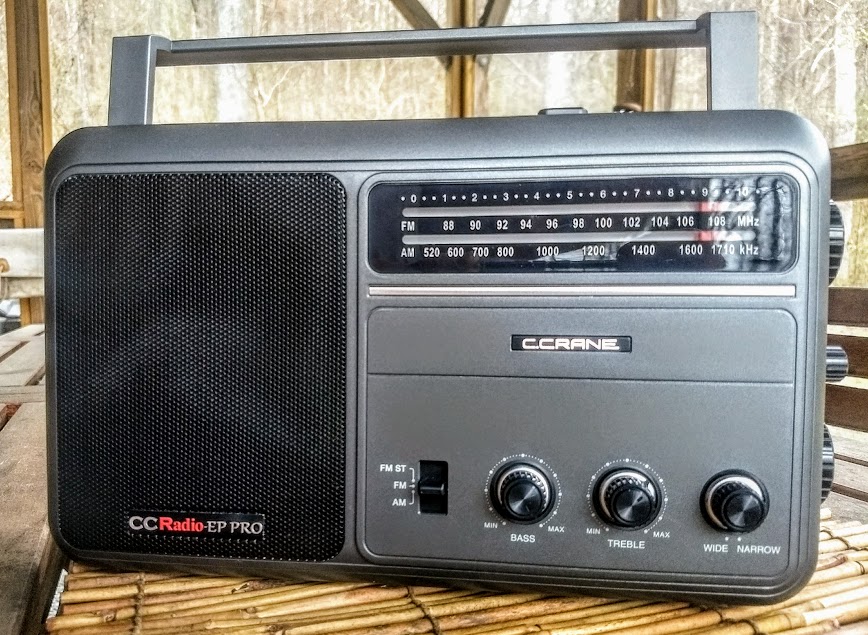
I know it’s kind of late for commenting but I recently bought a used CCradio EP. The AM radio dial was off frequency by about 30 KHz. That means it’s off by three stations. That’s a problem for me. I got ahold of the schematics adjusted the AM oscillator until it was exactly on frequency. Now the dial isn’t off anymore.
I didn’t check FM though.
Pingback: The History and Evolution of C Crane Radios: From Start to Present |
I got one of these in 2020. It’s not perfect but I think it’s the best game in town right now for medium wave DXing. One good thing about the muting between stations is you can tune it without even looking. Just tune to a known reference station and then count up or down as the audio mutes and then comes back as you go from one frequency to the next. I mean, if you have an “analog “radio that requires a 9/10 kHz switch, that pretty well says it all right there. There is no analog to it and you don’t really even have a tuning knob, it’s an encoder. All of that said, the iteration of this radio I bought outperforms every other radio I have on AM. Perhaps most significantly, it is a very usable radio in the sense that it will make a distant AM station actually listenable, whereas you may be able to get a station ID or something on the same station off of my Sangean ATS-909X2, the audio on that unit will be crazy noisy and you would just never listen to it that way. FM is decent, but the problem is that it really needs an FM bandwidth control. If you get two very strong FM stations on either side of a weak one, the audio isn’t clean because you hear interference from those other stations. But it is listenable. The 909X2 is a better FM performer than the EP Pro because of the FM bandwidth control.
I’ve had my C crane EP Pro for about 2 years now and low volume level listening is impossible. The static is terrible!!! Even on a strong station!!! It’s almost as if the amplifier is not powering the speaker at low volume. The only volume it’s okay to listen at is almost at full volume!!! What the heck is going on with this radio????
I’m replying to my own comment about the static (distortion) at low volume listening. Actually, I couldn’t even tell what was being said at low volume.
Well….. with much luck I came across an article on another website concerning low volume distortion. This gentleman was asking about what he was experiencing with his radio and a comment back to him was the it could be a capacitor or maybe the volume pot or maybe something else that I can’t remember. He also mentioned perhaps it was the speaker that was bad. So the gentleman thought that would be the easy fix and replaced his speaker with another one and voila, the distortion was gone. Then the gentleman that was offering the possible fixes, said that it’s possible to bend the legs of the speaker basket until you don’t hear the voice-coil rubbing inside the speaker magnet.
I took my radio apart again and disconnected the speaker from the main body of the radio at the little white push-in type connection. Now with the release of the four screws that hold the speaker in the radio, I was holding it in my hand and pushing down on the speaker cone ever so slightly while holding the speaker up to my ear. I could hear “scratchy” sounds coming from different areas, such as a clock, with noon being where the speaker wires connect to the speaker and 6 o’clock on the other side of the speaker and then the 3 o’clock and 9 o’clock positions too. One area sounded quieter than the rest so I went to work, bending with channel lock pliers, the legs on the scratchy sides of the voice coil. After a few trial and error methods, I had only noise that I could barely hear compared to the sand paper like sounds I heard when moving the woofer cone in and out oh-so-slightly!!!
Now I have low volume clear audio, as long as the station is coming in clearly, naturally…..
Hope this read helps people with low volume distortion such as the read that I came across earlier today!!!!
I tried buying an EP Pro – twice. The first radio was obviously shipped with a damaged case that someone had crudely tried to cosmetically improve. That radio went back to CC Crane. The second unit had a knob that fell off as soon as I began to turn it. That radio also went back to CC Crane. I have decided to look to other companies and their products.
I need a carry bag for the EP-Pro. Which Red Oxx bag is that in the picture? Thanks.
Hi, Richard,
The bag in the photo is the Red Oxx Micro Manager:
https://swling.com/blog/2017/11/a-review-of-the-red-oxx-micro-manager-edc-and-radio-gear-bag/
Red Oxx updated the design and added pleated pockets on the outside (a worthy upgrade!). Rex Oxx gear is made in the USA and guaranteed for life, as they say, “No Matter What.”
The EP Pro Fits inside perfectly.
Cheers,
Thomas
My CC ep has developed terrible static while tuning rendering it almost unusable. Can this be fixed?
Same here Stephanie. Terrible static when tuning and often continuing static once tuned.
Nice review! At the end you mention a few vintage solid state radios: GE Superadio, Sony-5500W, Panasonic RF-2200. From some brief research it looks like none of these have an aux input jack. Are you aware of any similar older radios which have aux input (either 3.5 mm jack or RCA)?
For example, many of the bigger European (regular) transistor portables have an aux input and in the multibander department, I think all of the original Grundig Satellits, the Nordmende Globe Travelers or the Panasonic RF-1150 have aux (actually tape-) inputs too but all of them in form of a 5-pin DIN socket.
I have recently bought this cccrane EP pro Fm/am radio
It has an AC adapter but it is meant for the use in U.S.A. (120) can anyone advice me where to buy an adapter for India (220)as I live in India
Thanks
A converter from 220 V to 120 V is easily available in any of the electronics shops in India.I am from Kerala and I faced the same problem when I purchased the Sangean WR11 radio. But the problem was easily solved by purchasing the adapter. You may also use a DC adapter of the required voltage (say 4.5V/6V)
All the best.
Thomas, will you be reviewing a unit from the improved run? when that will be out? will it has a different S/N? if not, how do we know, it has the promised improvements? would it be too expensive, if it had 1 khz tuning on A.M? thanks.
samuel
Hi, Samuel,
I’m not sure if C. Crane plan to send me one from the next production run. Note that they had even hoped to have the tuning inaccuracies sorted out by the first production run. I believe they planned to install a 9/10 kHz step switch in the second production run.
I would encourage you to contact them directly for the timeline. When customers contact them, it gives them a better indication of demand and what items to prioritize.
Cheers,
Thomas
Just to let you guys know I wrote a negative review of the new radio. Surprise thus far it did not get on the Crane web site. The 3 reviews they have are positive but I think they are for the old version. Have lost a lot of faith in C Crane my 25.00dollar Panasonic RF2400D totally outperforms the EP Pro. Oh well …
I only wish the RF2400D had an input jack. What I want is something like the old GE Superadios, but with an aux in, and without the flaws (and the high price) of the CCRadio-EP Pro.
Just sent my EP-Pro back. Your review was right on in every aspect I noticed on new EP-Pro…Sent it back although I was out another shipping charge. Could have kept it but out of principle- feeling I was screwed over by C Crane back it went. Sorry I did not read your review prior to purchase. Will CK your site next time……
CCrane now has these in stock, in case anyone is interested.
The 9/10 kHz “new feature” tuning is just another example of brutal Digital homogenization. Forget any split frequency DXing like 623 kHz or similar. Less capability for the same money…. seems no different now than any Sangean portable.
Thanks for an interesting review. It’s unfortunate that these newer CCrane sets only support 10kHz steps on medium wave, that limits their usefulness to anybody outside North America, DXers or anybody travelling between the 9 and 10kHz world.
For me the best performer on MW is the old Sony, the worst is the Tecsun, too much background noise, with the Crane in the middle.
So the DXing EP has become the listening Pro. That’s how I would summarize your review. C. Crane has effectively killed what was perhaps the best general in-production DX-er. It’s a shame, because this was its one advantage over the CCRadio 2E.
Exactly, Tim! It was disappointing to read of the inaccurate dial, too, as that’s a feature promoted early-on.
To quote from C. Crane’s own web site: “The dial accuracy of the new EP PRO is superior to our original model.”
Are you sure this radio uses the Si4734 chip? Silicon Labs have a range of radio chips specifically designed for mechanically tuned radios like this one (Si4820, Si4831) so I wonder why they did not use one of these. But none of these appear to have selectable bandwidths, something this radio does offer. Strange that you still have adjacent channel ‘images’ even with the narrow bandwidth setting. Selectivity on the Si4734 should be more than adequate not to be plagued by this.
The Si4734 does require an external microcontroller, while the Si4820/Si4831 could do without.
It was a C. Crane engineer who told me in an email that the EP Pro is built around the SI4734 chip.
Thomas, does the Sangean ATS-405 use the Sl4734 chip? That radio allows you to turn off tuning muting, so we know that “feature” can be programmatically disabled.
I’m not entirely sure, Jim. The impression I got from C. Crane engineering is that the AM muting is a limitation of the chip and I think they’ve tried to minimize AM muting as much as possible. Perhaps it’s how it’s configured in the EP Pro? I’m not entirely sure.
I wonder if someone could confirm the chip used in the ATS-405? I always assumed it was the Sl4734 or Sl4735.
In his online review, Jay Alllen mentioned a “a critical chip without which the EP could no longer be made.” And I’d like to know the name of that chip.
This is a good piece, and it all make sense to me. However, I still want to know about these “certain vital EP components are now becoming obsolete” that have led to the creation of the EP Pro, and of C Crane abandoning the manufacture of the previous model. Until I hear the specific name of a chip (or of these chips), this all sound kind of like BS. I’d be happy to be proved wrong.
I’ve never asked them specifics about the components that have been discontinued and that moved them toward a DSP model. I’m guessing these would have been analog components and not a “chip” per se, but I could be wrong. I’ve never looked into the original EP to see if it had ICs and such. Since it had no digital display even, I’d be a little surprised. Good question, though.